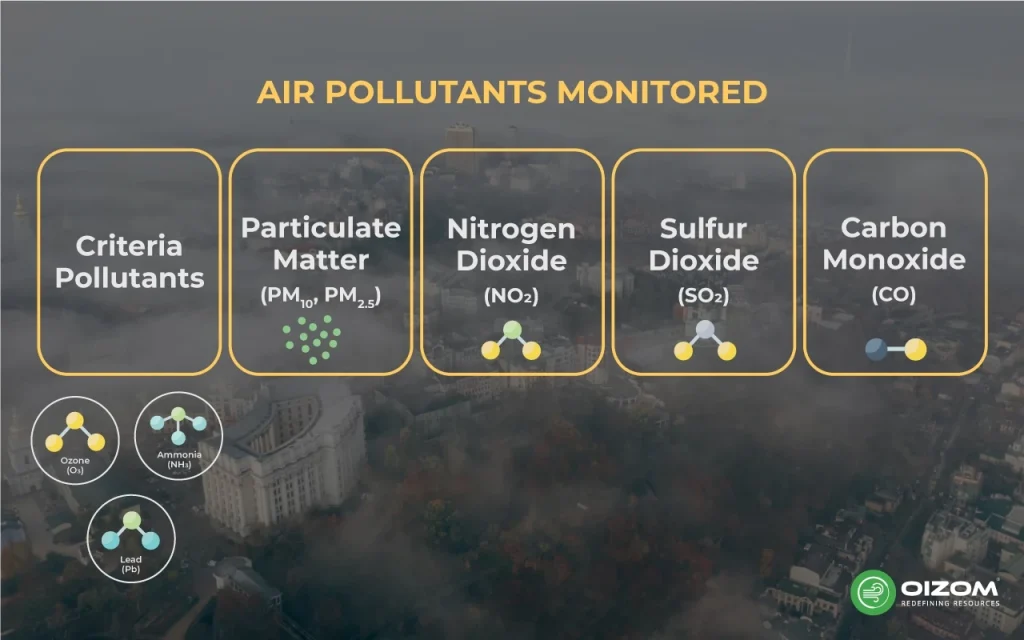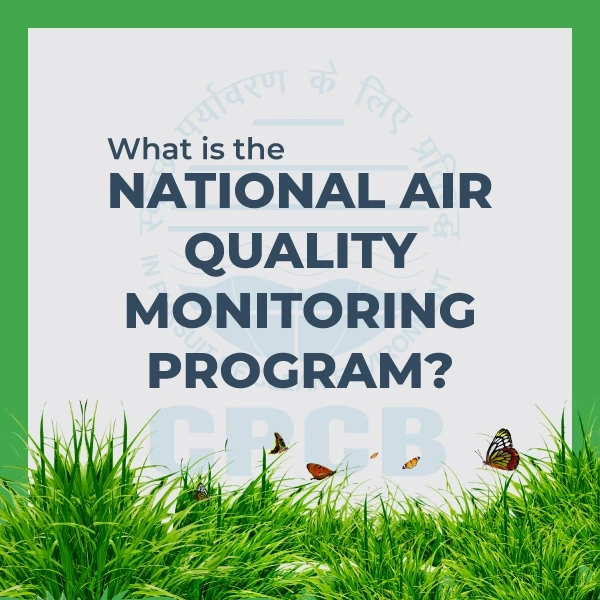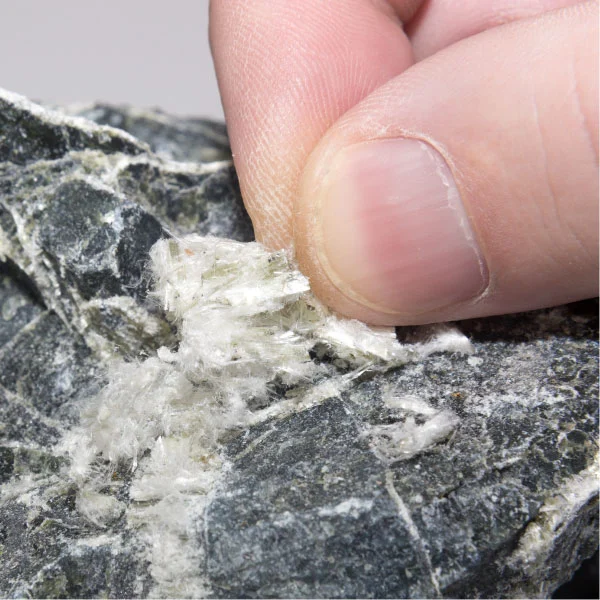Key takeaways Points
- The National Air Quality Monitoring Programme (NAQMP), managed by the Central Pollution Control Board (CPCB), is essential for monitoring and improving India’s air quality.
- It evaluates current air quality, ensures compliance with standards, and identifies non-compliant cities, guiding preventive and corrective actions.
- The program involves a central coordinating body working with regional and local stations for uniform data collection and analysis.
- Key agencies like the Health Department, the Meteorological Department, and research institutions support the CPCB.
- The NAQMP sets and enforces air quality standards under a stringent legal framework.
- As of 2023, 931 stations in 398 cities/towns monitor pollutants like SO2, NO2, PM10, PM2.5, CO, and O3.
- It uses manual methods to monitor air quality across various cities in India.
- The program faces challenges like network upgrades and expanding monitoring coverage, but it remains crucial for effective air quality management and public health protection.
- These key points highlight the NAQMP’s structure, objectives, and challenges, emphasizing the importance of accurate data and coordinated efforts to improve air quality in India.
What is the National Air Quality Monitoring Programme? Read More to understand all about it.
Have you ever heard about the National Air Quality Monitoring Program? You probably have if you’re an air quality professional, an expert, or someone in the environmental field. But this article is really for those who are curious about the program or aren’t familiar with NAQMP at all. I will start with basic insight to explain everything to you. So, what is a national air quality monitoring program?
The National Air Quality Monitoring Program (NAMP), managed by the Central Pollution Control Board, is an extensive initiative to monitor ambient air quality throughout the entire nation. It involves systematically measuring air pollution levels, monitoring changes over time, and providing data to aid in developing air quality improvement plans. This program is critical for understanding how air pollution affects human health and the environment and assuring compliance with air quality standards and laws. In this article, I will share all insights into NAQMP, its importance, and its challenges and objectives.
Objectives of the National Air Quality Monitoring Program
The National Air Quality Monitoring Programme (NAMP) seeks to fulfill the following objectives:
- Evaluate the current condition and trends in ambient air quality.
- Check for compliance with the given ambient air quality requirements.
- Identify non-achievement cities that do not meet air quality criteria.
- Develop an understanding of how to implement preventative and corrective measures.
- Understand how the environment is naturally cleaned through pollutant creation, dilution, dispersion, wind-based movement, dry deposition, precipitation, and chemical change.
Organizational Structure
The NAQMP is designed to provide efficient and effective air quality monitoring nationwide. It is often overseen by a central coordinating body, which is often a government institution in charge of environmental protection. This central organization works with a number of regional and local monitoring stations, each equipped with the technology required to measure various pollutants in the air. The organizational structure promotes seamless communication and data exchange among all stakeholders, enabling a uniform approach to monitoring air quality.
Government Agencies Involved
Several government agencies contribute significantly to the NAQMP’s implementation and success. The primary agency is typically the National Environmental Protection Agency, which supervises the program and ensures it adheres to national environmental regulations and standards. Other important agencies are the Health Department, which evaluates the impact of air quality on public health, and the Meteorological Department, which collects data on weather conditions that influence air pollution levels. Furthermore, research institutions and colleges frequently work with these agencies to give scientific expertise and support.
Roles and responsibilities
Each agency involved in the NAQMP has specific roles and responsibilities to ensure the program’s success. The central environmental agency coordinates the overall program, sets air quality standards, and compiles and analyzes data from various monitoring stations.
Legal and Regulatory Framework
The NAQMP works under a legal and regulatory framework defined by national and regional environmental legislation. These regulations establish air quality standards and protocols for measuring and reporting air pollution levels. The framework guarantees that air quality data is collected regularly and properly, allowing regulatory bodies to enforce compliance with air quality standards. Regulatory frameworks frequently incorporate penalties for noncompliance and incentives for lowering emissions to encourage compliance with air quality laws. This framework is critical for establishing a strong air quality monitoring system and ensuring effective implementation of air quality improvement initiatives.
Standards and Guidelines
The Central Pollution Control Board developed the National Air Quality Monitoring Programme (NAMP) to monitor air quality in 29 states and six union territories. I took this reference from the CPCB website, which was updated on 16 September 2021.
Central Pollution Control Board is executing a nationwide program of ambient air quality monitoring known as the National Air Quality Monitoring Programme (NAMP). The network consists of 804 operating stations covering 344 cities/towns in 28 states and 6 Union Territories of the country.
Standards:
- The CPCB establishes legally binding national ambient air quality standards (NAAQS) for various pollutants.
- These guidelines establish maximum allowable values for pollutants such as PM2.5, PM10, SO2, NO2, and Ozone (O3).
- If NAMP monitoring stations discover levels above NAAQS, it signals poor air quality and requires authorities to resolve the problem.
Guidelines:
- NAAQS are based on scientific studies, and stronger recommendations for improved air quality could be made.
- The CPCB may also provide further rules regarding monitoring processes, data analysis, and reporting.
- These guidelines may include best practices for station siting, equipment calibration, and data quality assurance.
Monitoring Network
The monitoring is carried out by the Central Pollution Control Board, State Pollution Control Boards, Pollution Control Committees, and the National Environmental Engineering Research Institute (NEERI) in Nagpur. The CPCB coordinates with other authorities to maintain the uniformity and consistency of air quality data, and it offers technical and financial assistance to them in operating the monitoring station. The N.A.M.P. is operated by numerous monitoring agencies, with many persons and equipment involved in sampling, chemical tests, data reporting, etc. It raises the chance of fluctuation and personnel biases reflected in the data. Hence, it is relevant to highlight that these statistics should be viewed as indicative rather than absolute.
Pollutants are monitored twice a week for 24 hours each time (4 hours for gaseous pollutants and 8 hours for particulate matter), with a frequency of twice a week, to have one hundred and four (104) observations in a year.

Types of Monitoring Stations
This blog will discuss two types of monitoring stations: manual monitoring stations and continuous ambient air quality monitoring stations.
Manual Monitoring Station:
Ambient air quality monitoring systems, generally known as Manual air quality monitoring systems, sample ambient air and collect data for a period of time. The data is then manually transferred for analysis. Once the data is analyzed, a report is prepared manually.
AAQMS includes a High-Volume Sampler System to sample a known air volume through filters. The filter is analyzed for different pollutants Depending on their weight before and after sampling. The process of air sampling, data collection, data analysis, and report preparation takes 2 to 7 days to provide the proper information about ambient air pollution in a particular location.
Continuous Ambient Air Quality Monitoring Stations (CAAQMS):
Continuous Ambient Air Quality Monitoring Stations (AAQMS) use specialized technology such as IoT to gather and transport data automatically, reducing the possibility of manual errors. They are an advanced version of the AAQMS. Air quality data is collected in real-time and sent to servers for analysis and reporting. The data transfer interval can be set between 2 and 30 minutes, after which the data is processed by AI and used as needed.
CAAQMS operates on many principles and analyzers in an automated manner, producing reliable data while eliminating the risk of manual errors. There are two methods of analyzing data for continuous ambient air quality monitoring:
- Sensor-based system: The air monitoring equipment uses sensors that work on different principles to measure different pollutants. For example, PM sensors work on the principle of Laser Scattering, gases such as NO2 and CO work on the principle of electrochemical, and TVOC work on the principle of PID. Sensor-based technology from Oizom will be very helpful in monitoring air quality with accurate data.
Oizom is a Smart Air Quality Monitoring Solutions company that offers data-driven environmental solutions for better decision-making. Oizom offers affordable and scalable air-monitoring solutions to make air quality data accessible to everyone. Our air monitoring systems monitor various environmental factors, including air quality, polluting gases, odorous and toxic gases, noise, weather conditions, and radiation. Using our patented e-breathing technology, we ensure high accuracy even in extreme conditions.
- CPCB/SPCB: Regulatory monitoring by the Central Pollution Control Board and State Pollution Control Board is conducted to collect the ambient air pollution data from different cities and analyze it at the center. A traditional CAAQMS has dedicated analyzers for different pollutants; for example, PM pollutants are analyzed using gravimetry and filtration. Currently, the national air quality monitoring network is present only in 268 cities out of the 5,000 cities and towns in India due to high cost, high manpower requirements, and costly O&M procedures.
Moreover, one of the major cons of FRM:
Higher cost of FRM/FEM: You all might be aware of traditional reference grade monitors FRM/FEM. How does it work? And what are the pros of it? Let me share with you what are the cons of FRM/FEM: Traditional FRM and FEM monitoring equipment is expensive, typically costing between $15,000 to $40,000 per monitor. Properly running the instrumentation sometimes necessitates a temperature-controlled environment, and routine calibration and maintenance necessitate specialized experts, resulting in even higher operating costs; the annual cost to maintain a FRM can frequently exceed the significant purchase cost.
Air Pollutants Monitored

Under N.A.M.P., four air pollutants are routinely monitored.
- Sulfur Dioxide (SO2),
- Oxides of Nitrogen as NO2,
- Respirable Suspended Particulate Matter (RSPM / PM10), and
- Fine Particulate Matter (PM2.5) has been identified for regular monitoring at all the locations.
Criteria Pollutants
While the above are the primary criteria pollutants, NAMP may also monitor other pollutants at selected stations based on local needs. These might include:
- Ozone (O3): Ground-level ozone can cause respiratory problems and exacerbate asthma.
- Ammonia (NH3): Once emitted, ammonia (NH3) stays in the atmosphere for a few hours.
- Lead (Pb): Lead exposure can damage the nervous system, particularly in children.
Particulate Matter (PM10, PM2.5)
PM2.5 are atmospheric aerosols that have a maximum diameter of 2.5 micrometers. This form of suspended particulate matter is considered the most hazardous to human health. This is due to its extremely fine nature and ability to enter directly into the bloodstream.
- Levels higher than permitted National Ambient Air Quality Standards in most cities.
- The exponential rise in vehicle numbers is a major contributor to high RSPM levels.
PM10 is a mixture of particles suspended in the air that do not exceed 10 micrograms in diameter. It is harmful because it contains benzopyrenes, furans, dioxins, and carcinogenic heavy metals.
- Levels higher than permitted National Ambient Air Quality Standards in most areas.
- Sources include vehicles, natural dust, industrial emissions, and dust resuspension.
Nitrogen Dioxide (NO2)
Nitrogen dioxide (NO2) is a reddish-brown poisonous gas and a major air contaminant. NO2 irritates the nose and throat, increasing susceptibility to respiratory infections. It is a highly effective and selective vasodilator for pulmonary arterial hypertension.
- Levels below regulated National Ambient Air Quality Standards in most cities.
- The declining trend observed in Bhopal, Solapur residential areas, etc., can be attributed to measures to reduce vehicular pollution.
- Transportation remains a significant source of NO2, though ambient levels fluctuate in many areas despite increased vehicular density.
Sulfur Dioxide (SO2)
Sulfur dioxide (SO2) is a colorless, soluble gas with a distinctively unpleasant odour. Volcanic eruptions and industrial activities produce this chemical molecule, which is a precursor to particles in the atmosphere.
SO2 in ambient air can also affect human health, particularly in those suffering from asthma and chronic lung diseases, and exacerbates respiratory symptoms and impaired breathing in sensitive individuals
- Concentrations are within permitted limits set by the National Ambient Air Quality Standards.
Carbon Monoxide (CO)
Carbon monoxide (CO), also called carbonic oxide, is a colorless, odourless, and tasteless gas that is slightly lighter than air. In higher quantities, it is highly toxic to humans and animals. It is mainly formed by incomplete combustion of carbon-containing fuels.
CO enters the bloodstream through the lungs, combining with hemoglobin to generate carboxyhemoglobin. Anoxemia is a condition that reduces the blood’s capacity to carry oxygen.
NAMP – Non-Attainment Cities
- The CPCB labels cities that fail to fulfill the National Ambient Air Quality Standards (NAAQS) as non-attainment.
- These cities were identified using ambient air quality data from 2008 and 2010 as part of the National Air Quality Monitoring Program.
- Nonattainment cities are those that do not meet national ambient air quality criteria.
- States are developing and implementing programs to minimize air pollution in non-attainment cities.
NAMP- CHALLENGES
- Network Upgrade: The present monitoring network must be upgraded to ensure its effectiveness and dependability in properly capturing air quality data.
- Regular Monitoring Stations: Regular monitoring stations should be established in accordance with population density, traffic volume, and industrial activity to give complete coverage and insights into air quality variations.
- Additional Online Stations: Setting up additional online monitoring stations is essential to gather real-time data on pollution levels. This will enable authorities to identify areas with pollution levels and take prompt corrective actions. This expansion aligns with recommendations from the Parliamentary Committee.
- Regional Action Plans: Policymakers and pollution control officials must create city and region-specific action plans based on exact data acquired from monitoring stations. These strategies should identify specific interventions to reduce air pollution successfully.
Conclusion
In summary, this blog explains the basics of the National Air Quality Monitoring Programme (NAQMP). As public awareness about air pollution grows, understanding the benefits of pollution management is crucial. Despite governance, rules, and policies, India struggles with the practical implementation of air quality monitoring. However, state pollution control boards are adopting best practices, and the Ministry of Environment, Forests, and Climate Change is working with state governments on the National Clean Air Programme to reduce particulate matter and other pollutants. Data quality is vital for effective decision-making regarding the environment and public health. The Central Pollution Control Board (CPCB) has taken steps through its zonal offices to ensure this, conducting quality control tests and maintaining monitoring stations with regular visits and inspections.






